CSS is used to style and lay out HTML elements. CSS rules contain selectors that identify elements and declarations that specify properties and values to style those elements. Different selector types like type, ID, class, and multiple selectors allow rules to target different element groups. Embedded style sheets contain CSS code directly in HTML, while external style sheets can style multiple pages by linking via the <link> element. Comments document style sheets, and developer tools and validators help debug and standardize CSS code.
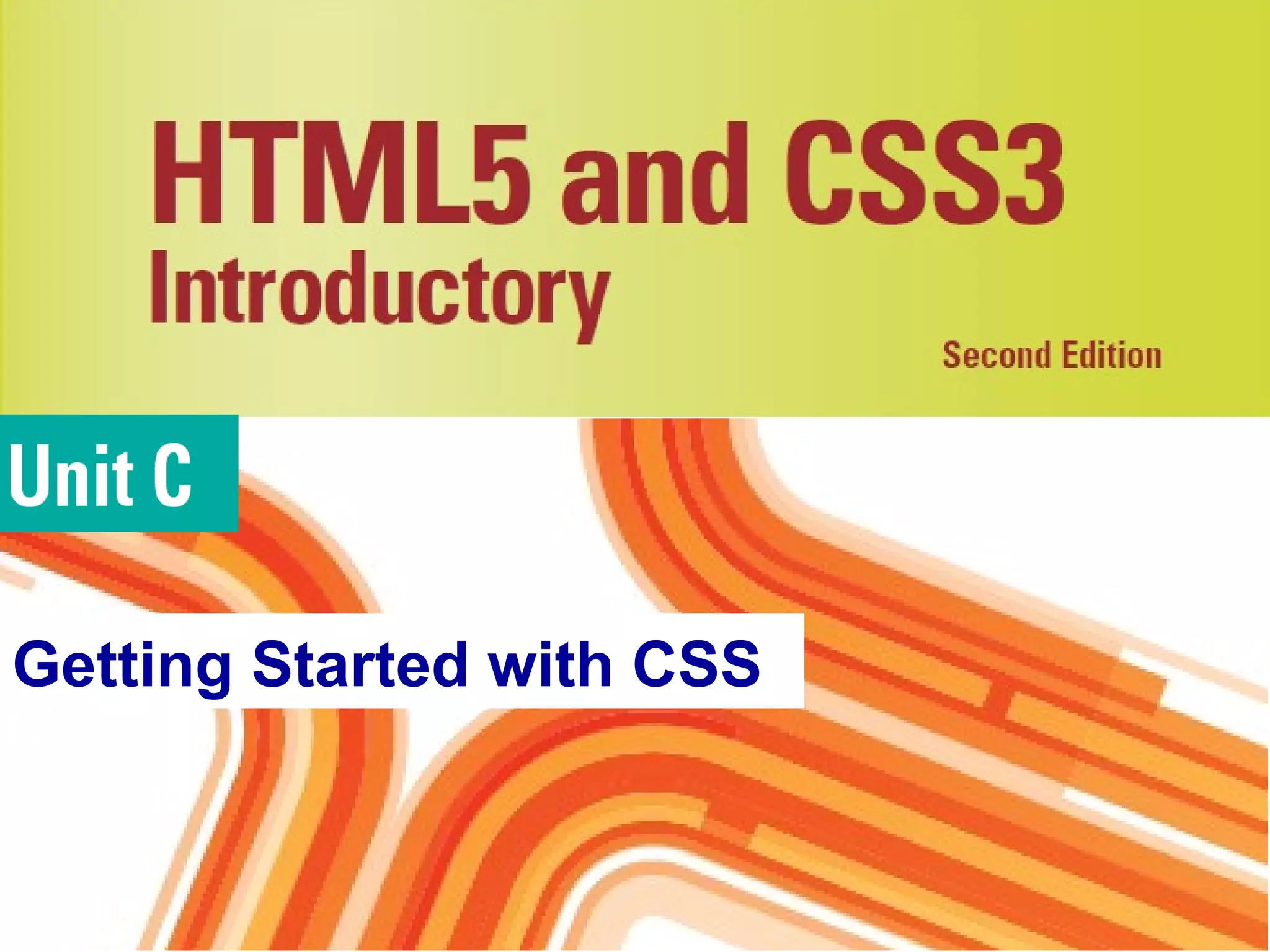
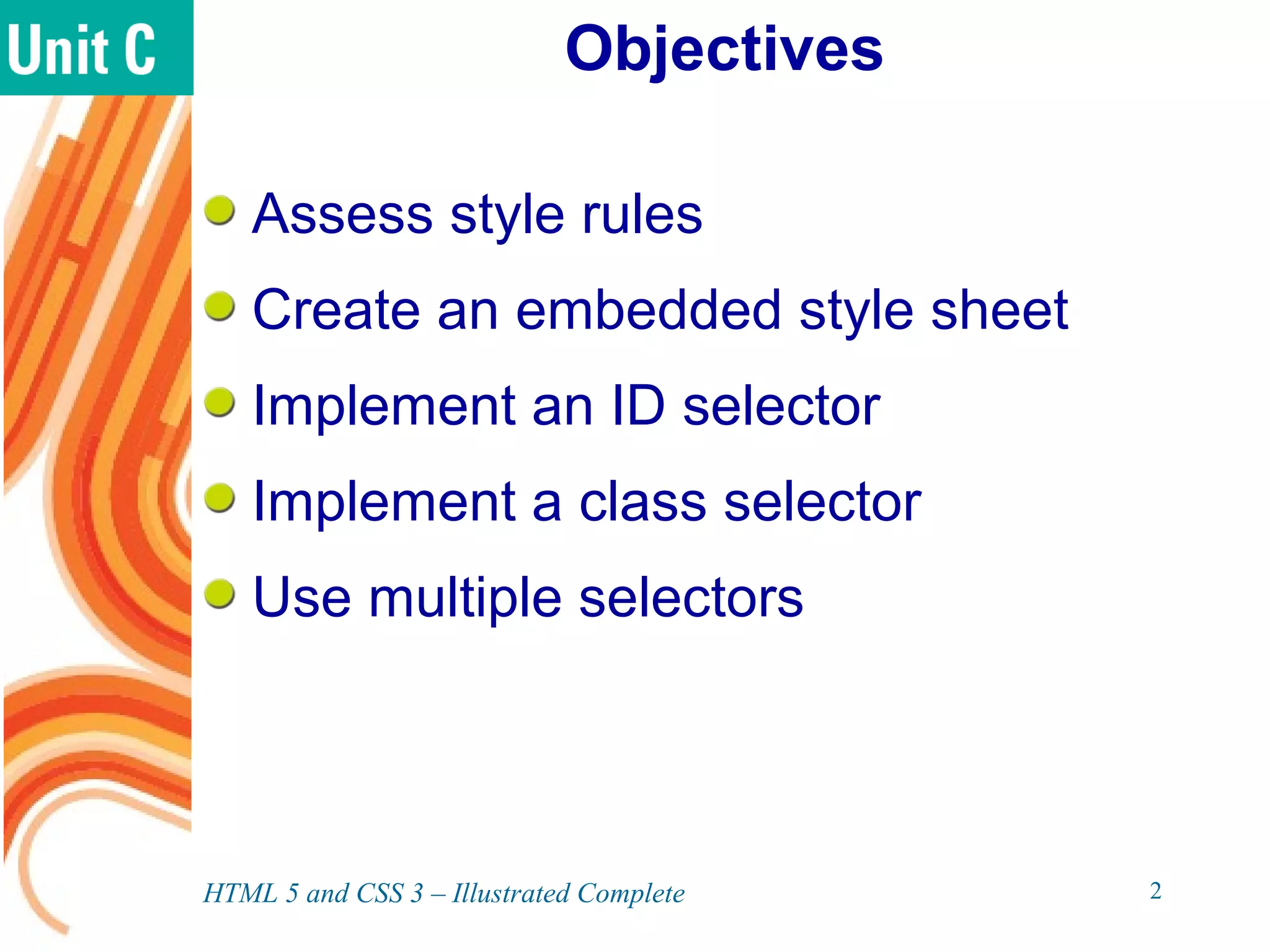

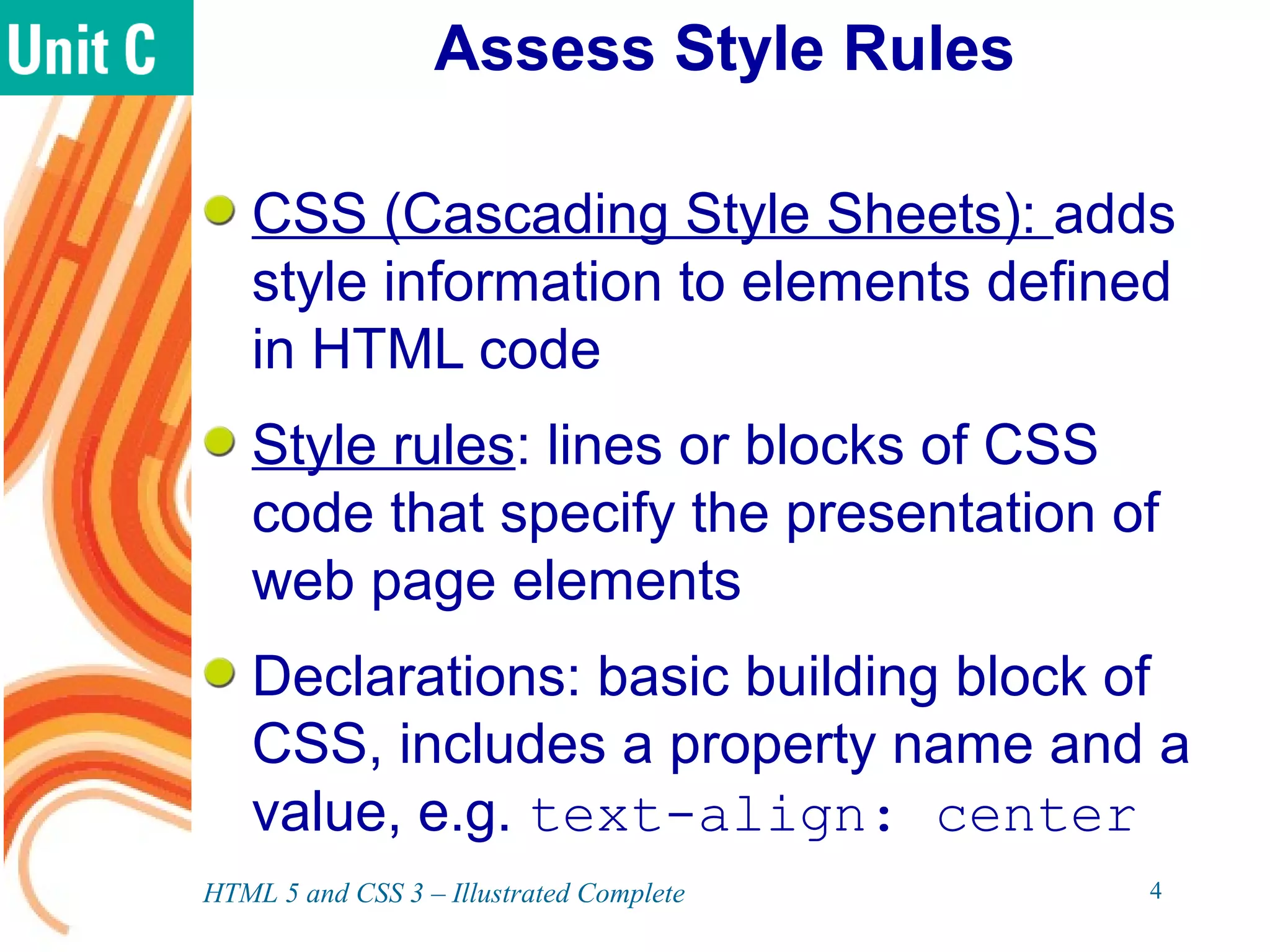
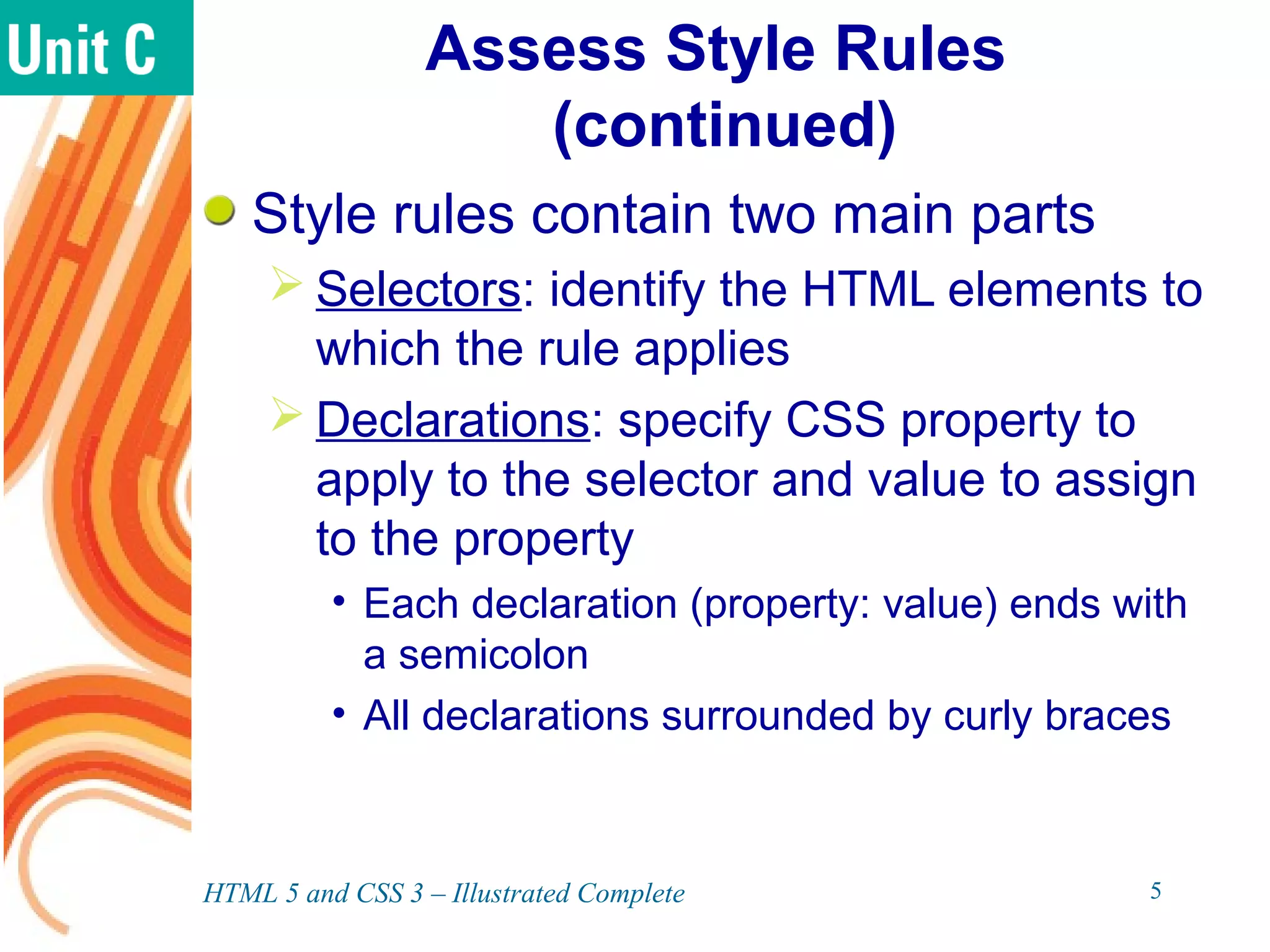




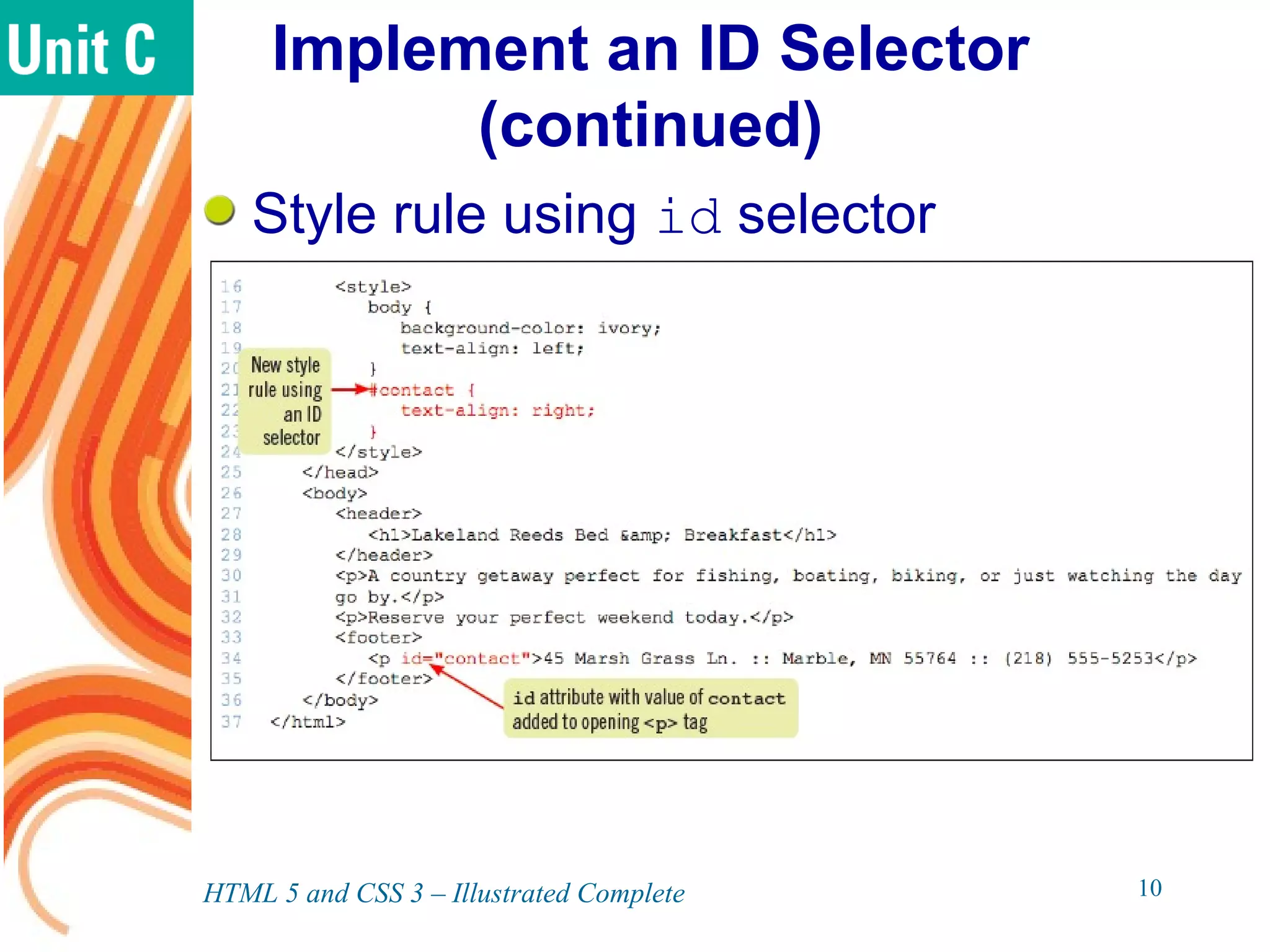
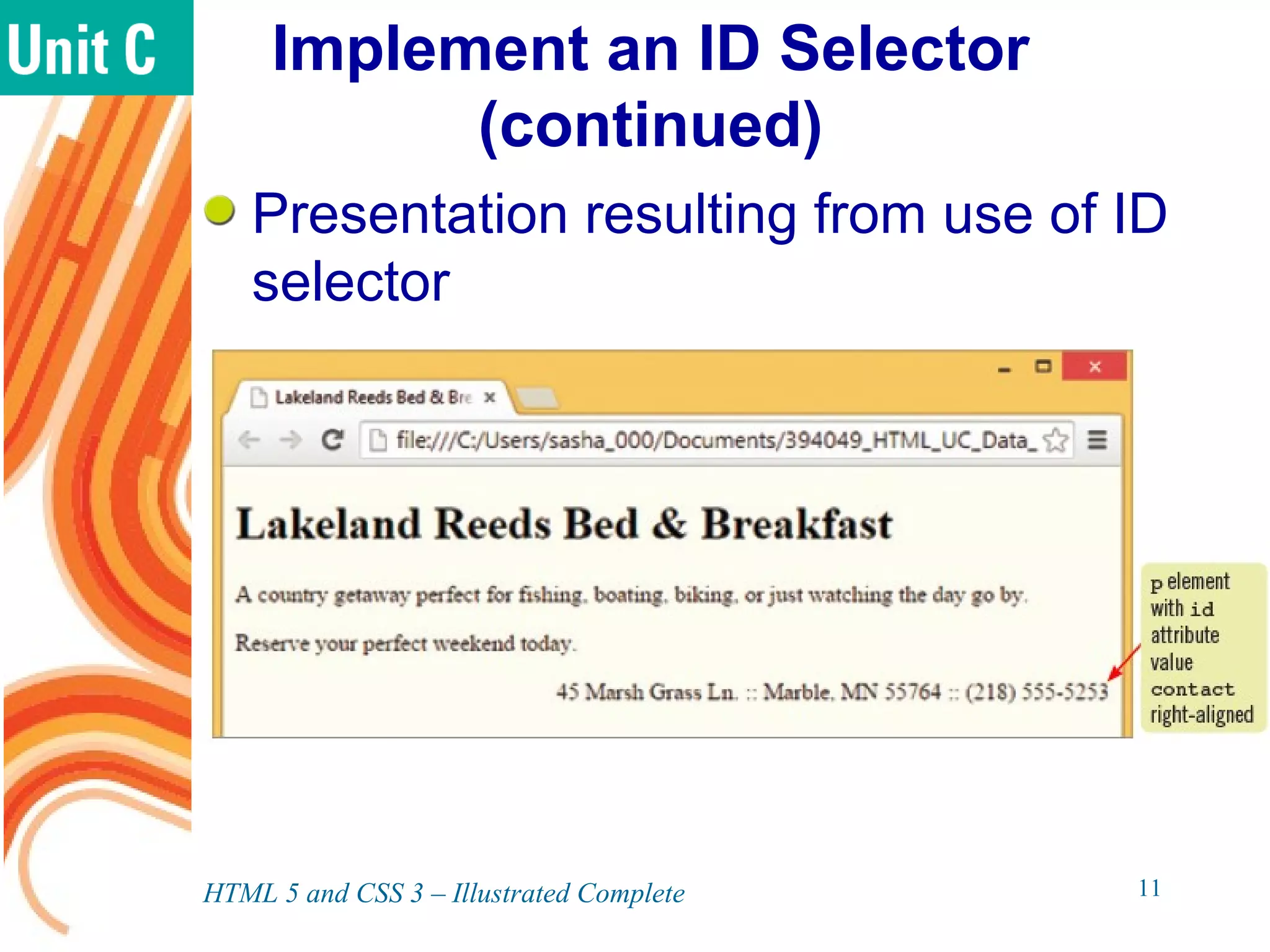

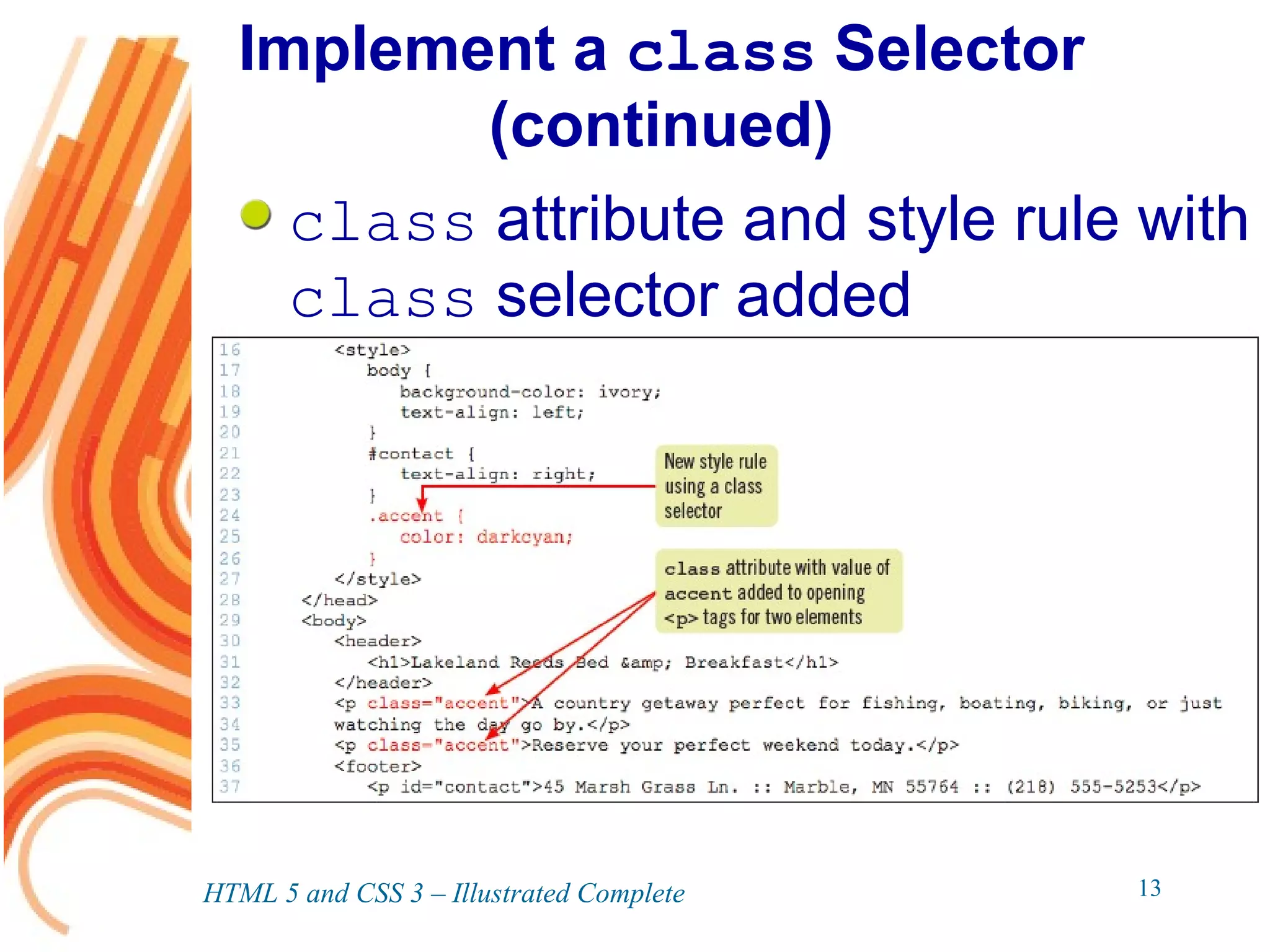
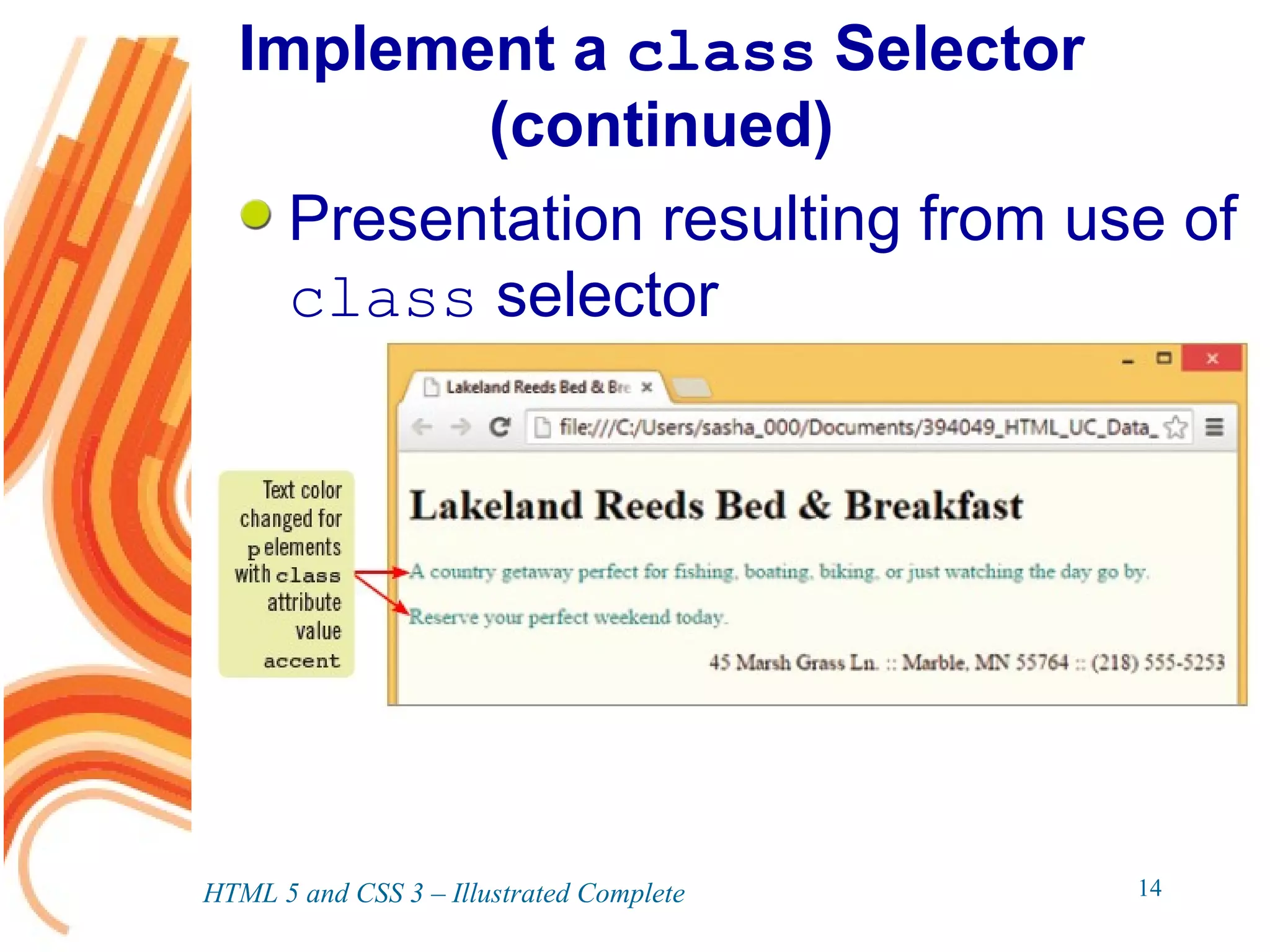
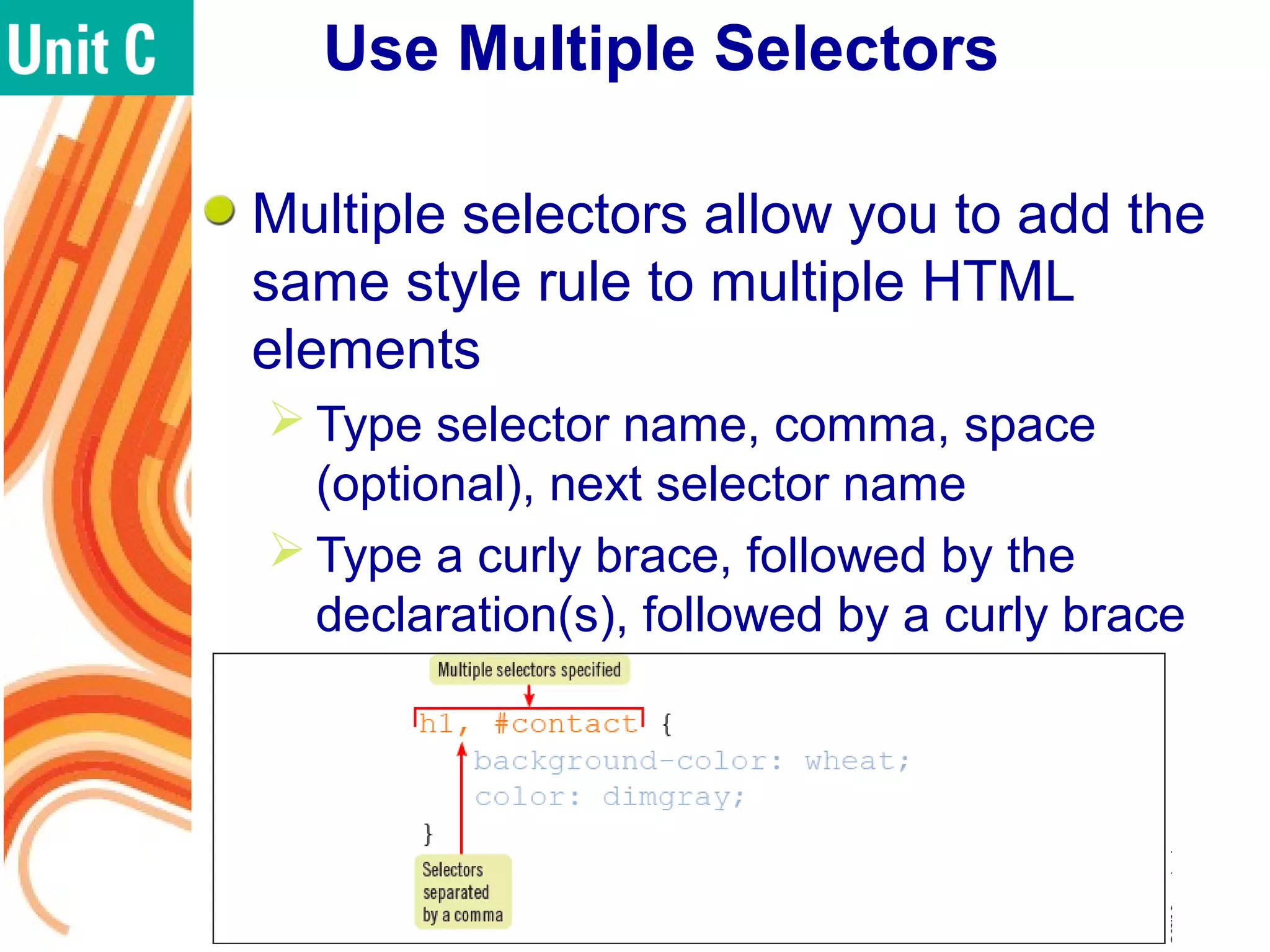
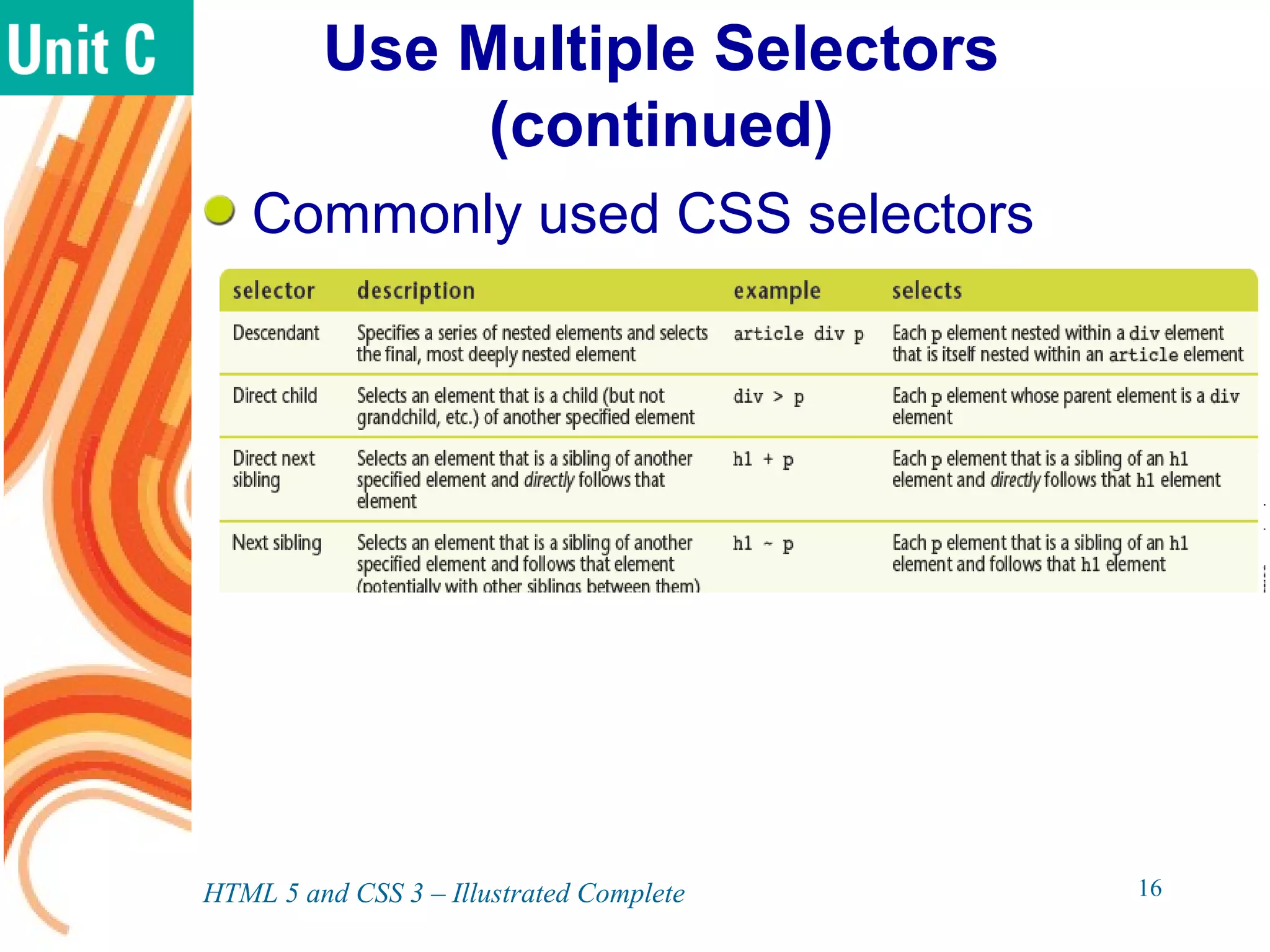

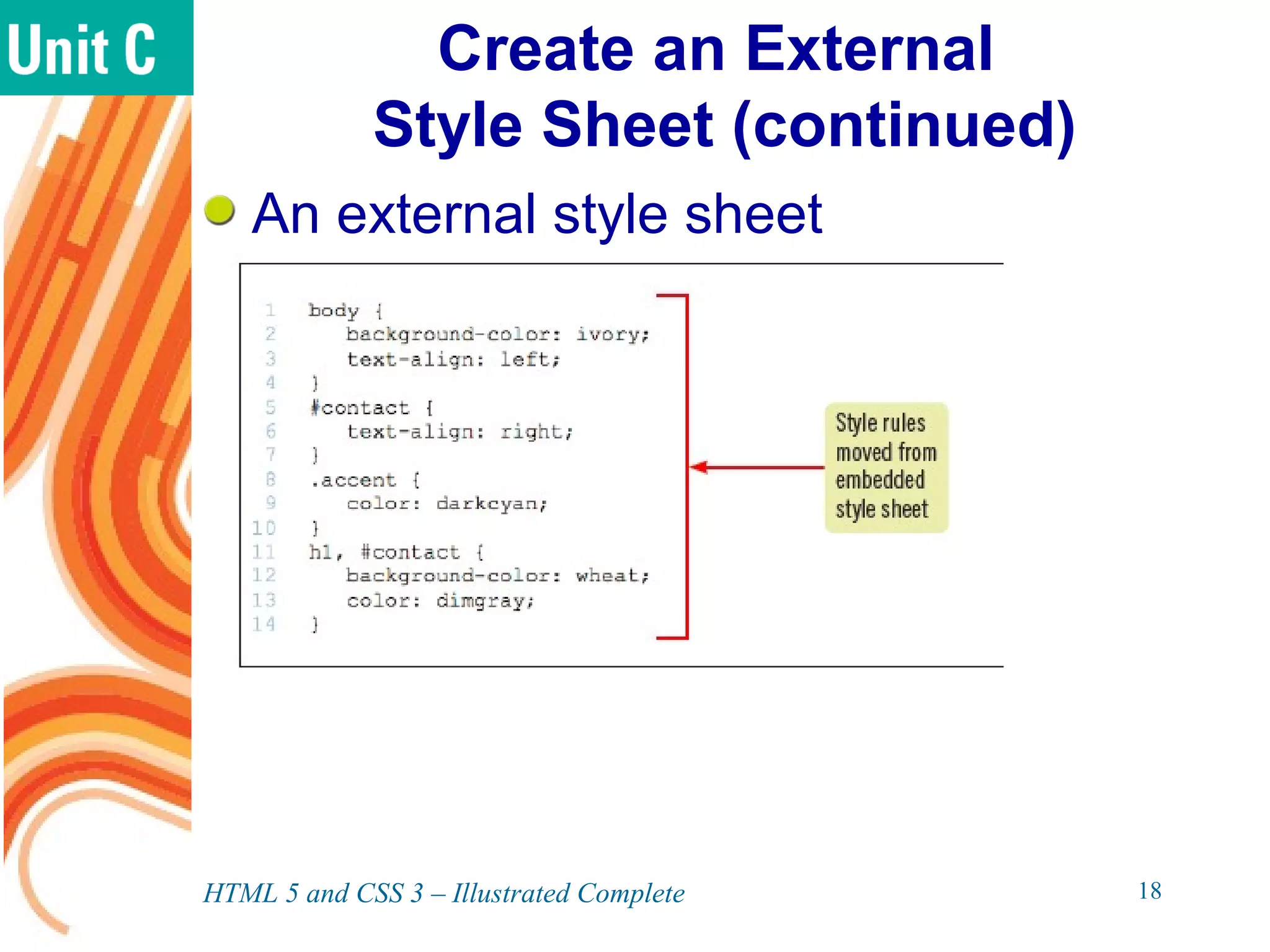
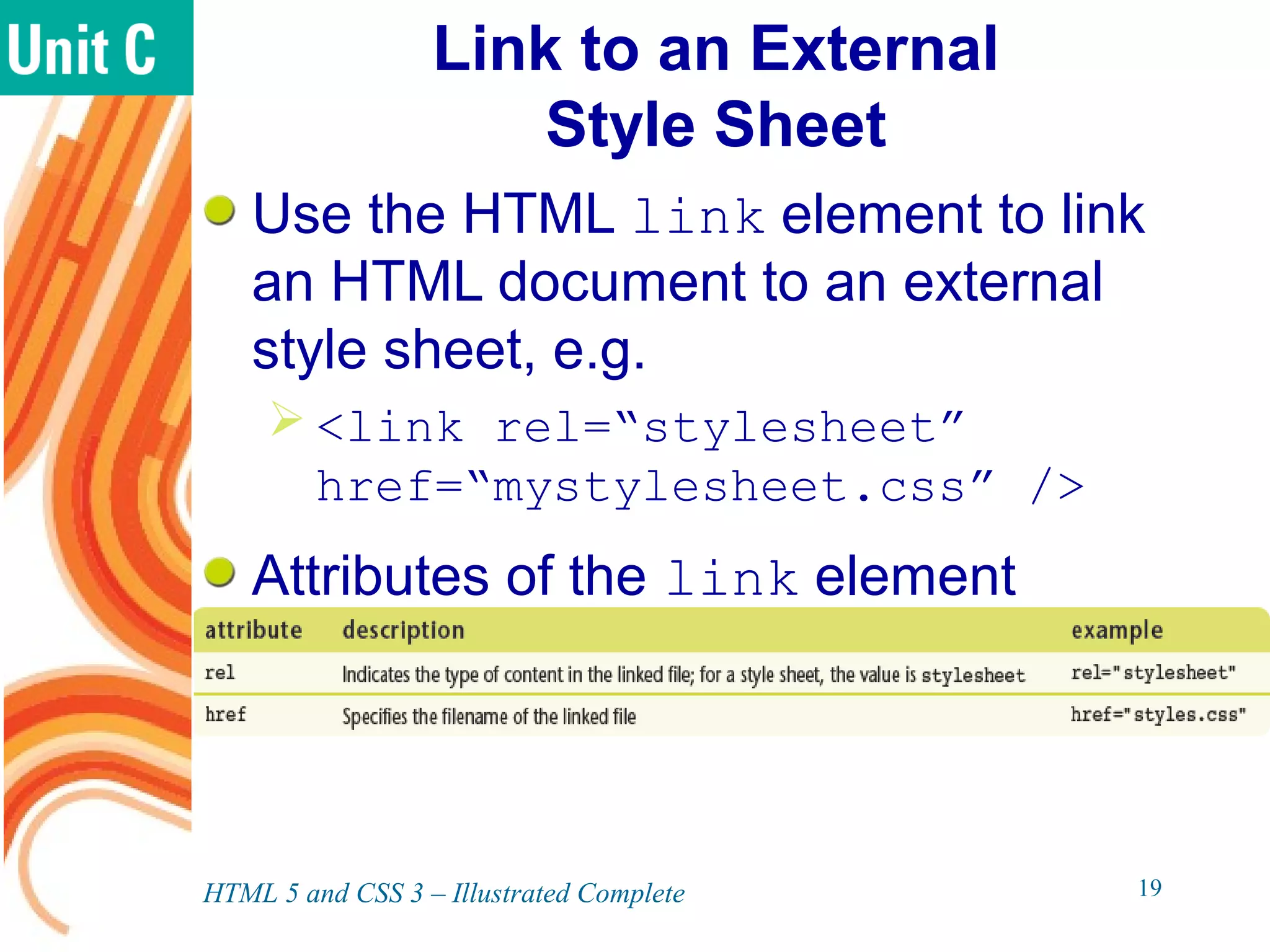
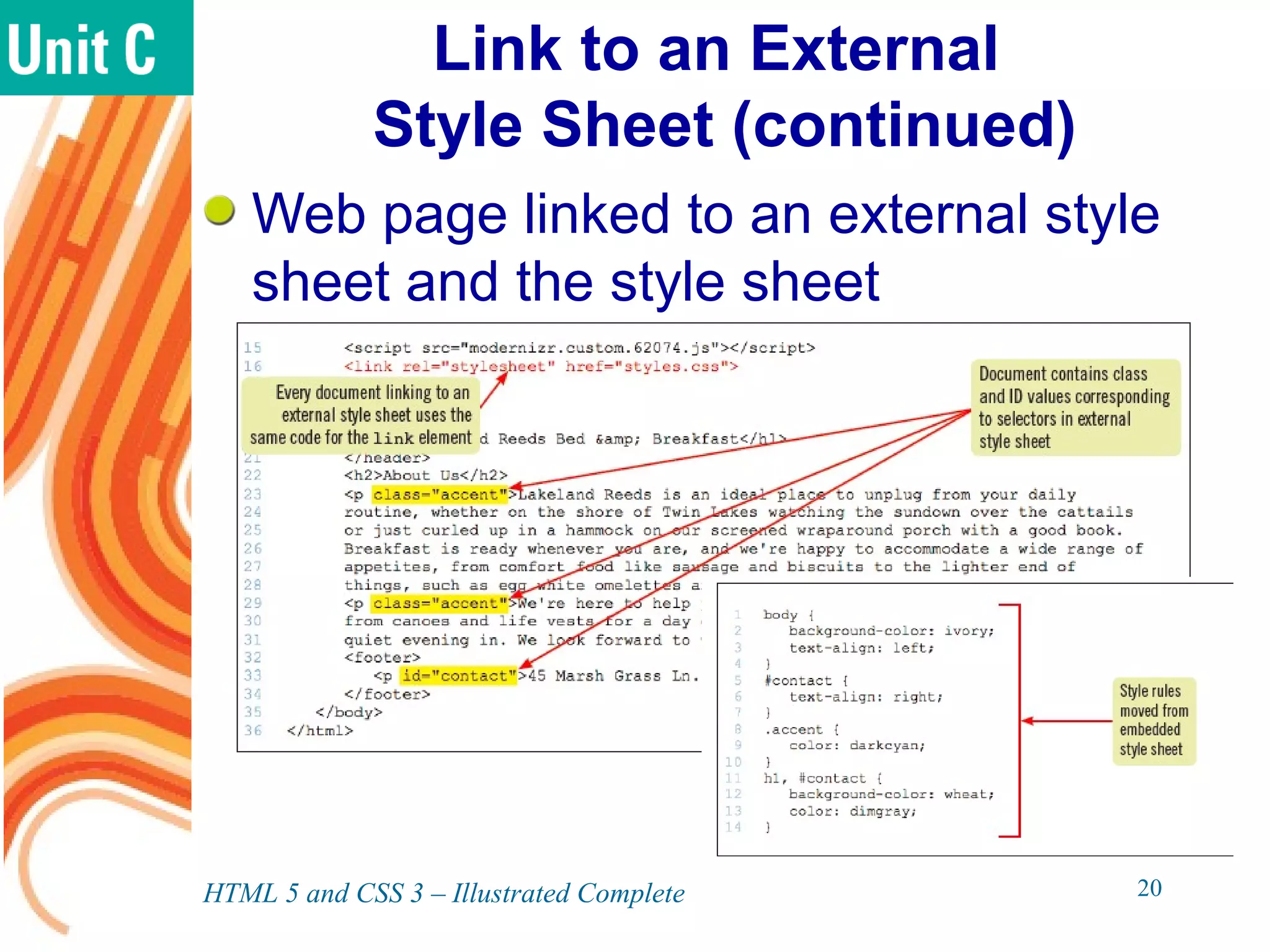
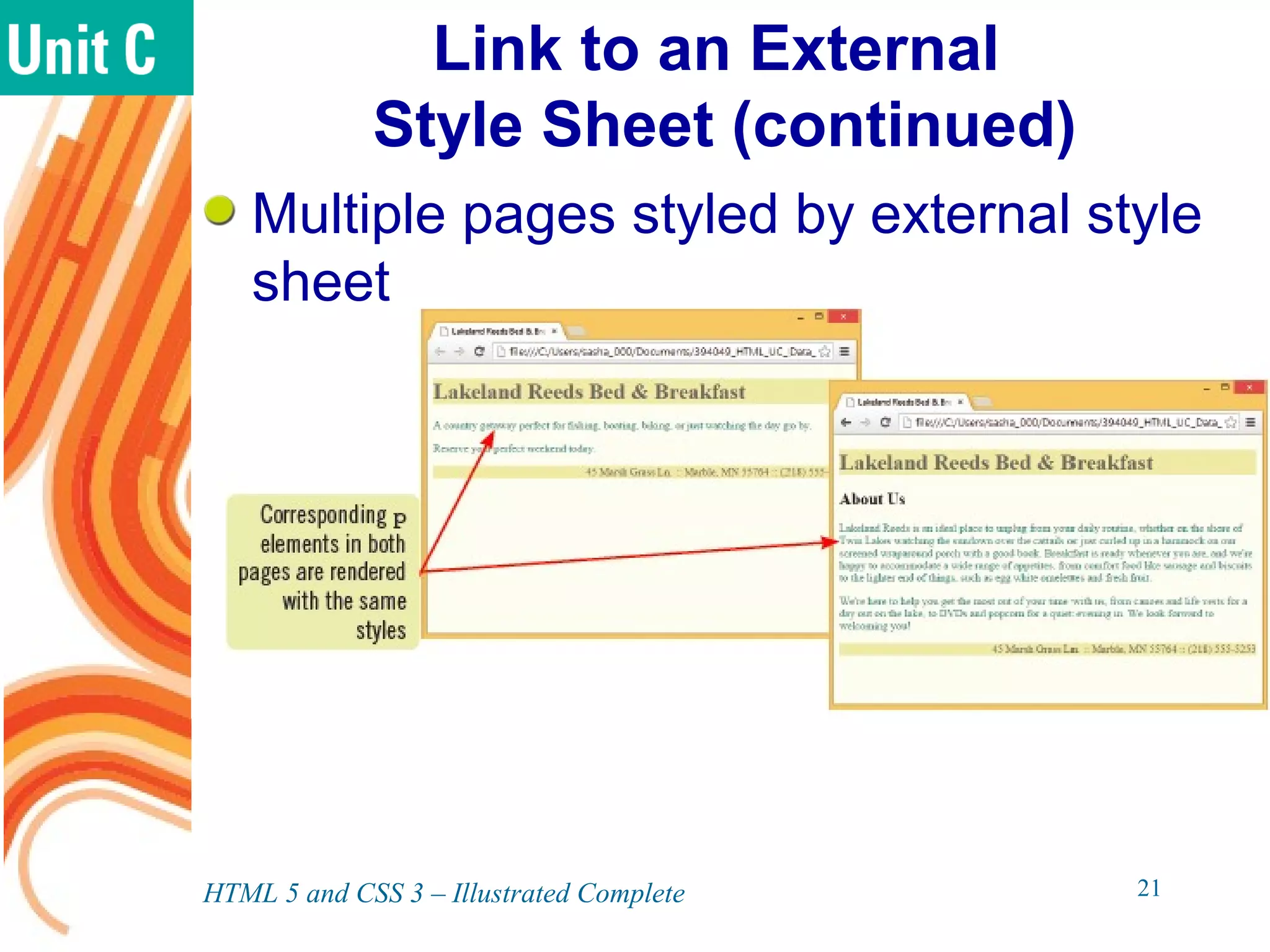
![Add a Comment to a Style Sheet Use comments in CSS style sheet to document the file Syntax for style sheet comments /* for opening tag [comment text] */ for closing tag Format for style sheet comments Can be single line Can be multi-line HTML 5 and CSS 3 – Illustrated Complete 22](https://image.slidesharecdn.com/html5andcss3ill2eunitc-170124045257/75/Getting-Started-with-CSS-22-2048.jpg)
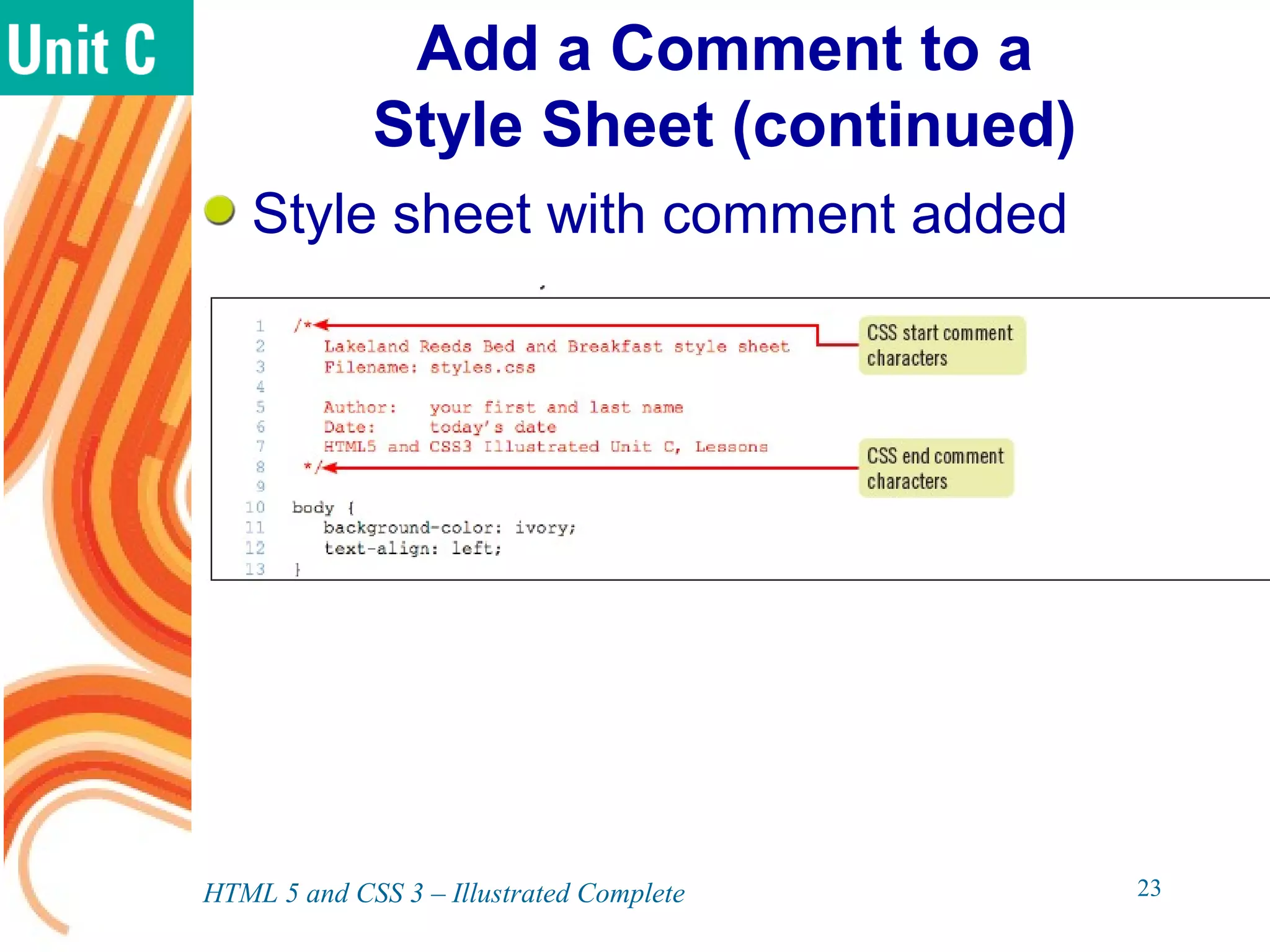



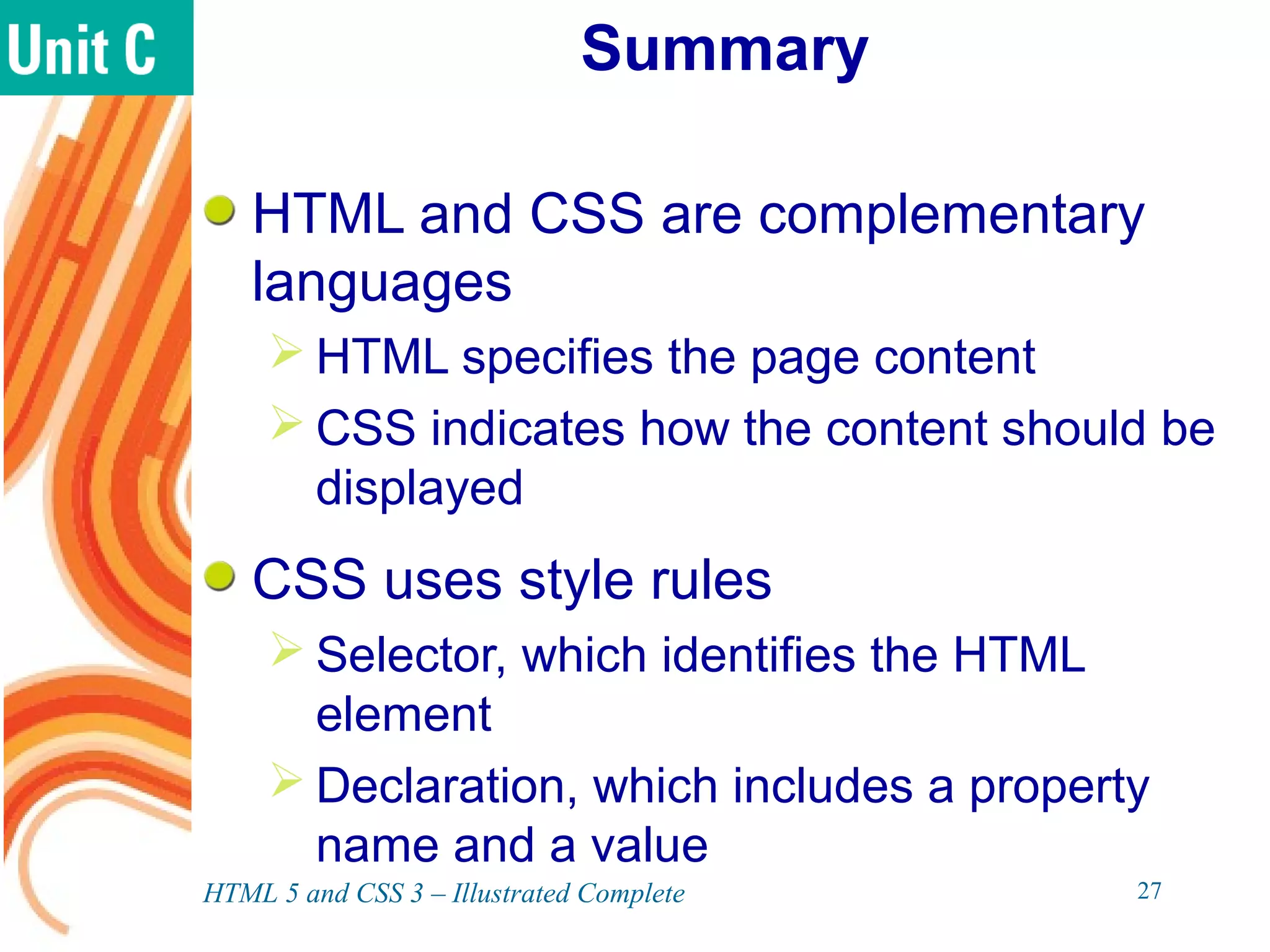
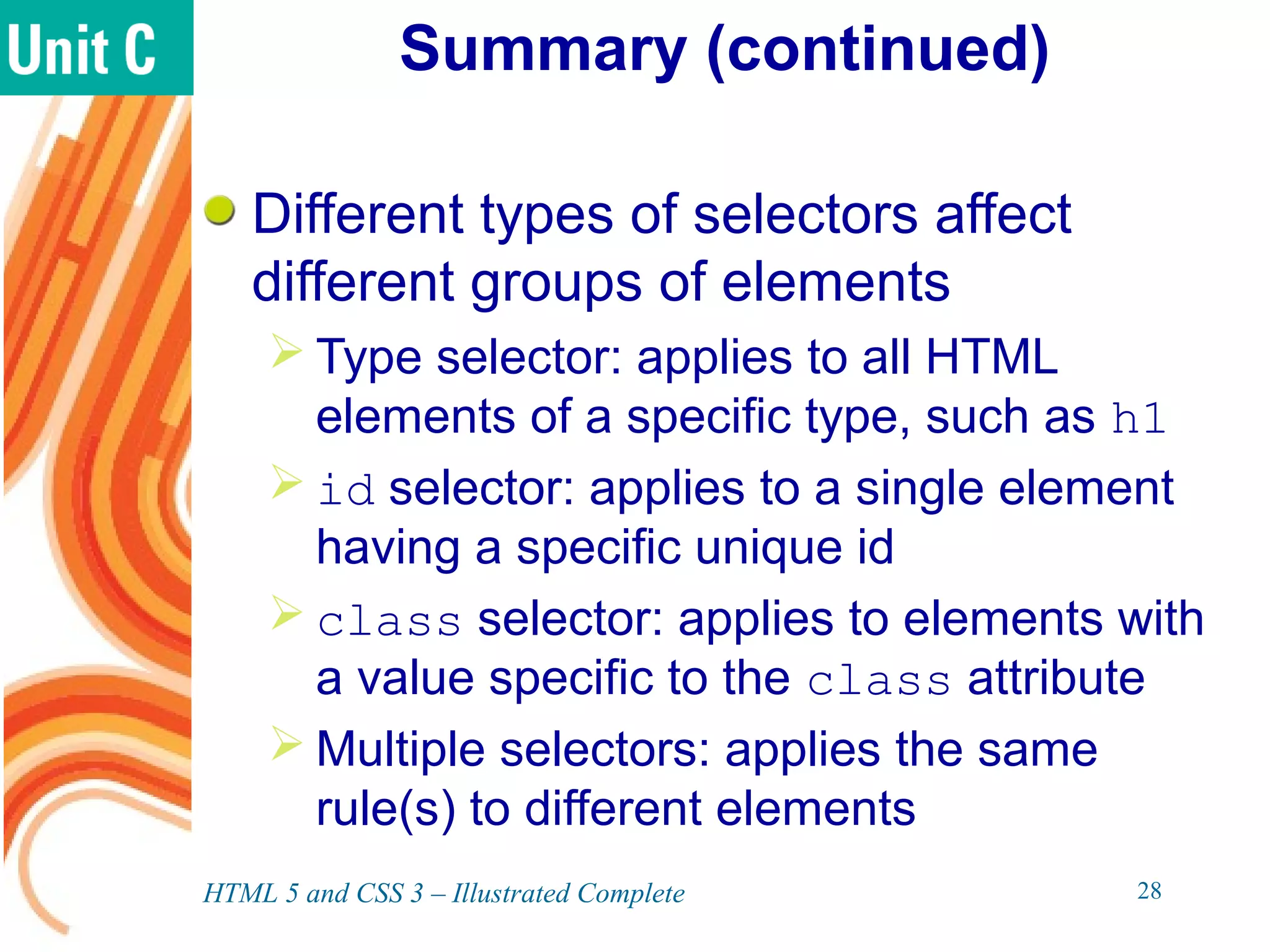
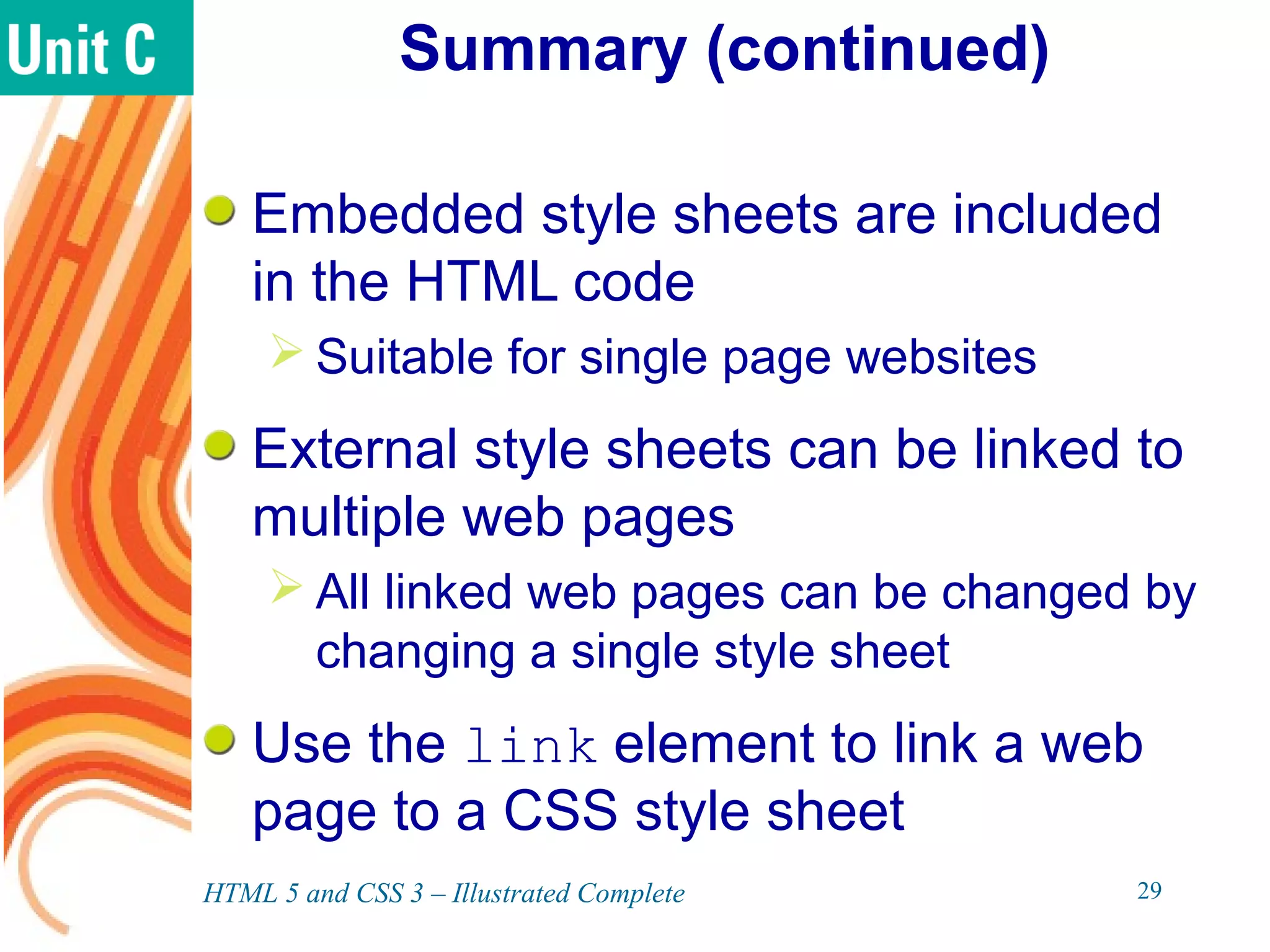
![Summary (continued) Use comments to document the style sheet /* [comment text] */ Use developer tools to debug CSS code Use online validation service to validate CSS code against CSS rules HTML 5 and CSS 3 – Illustrated Complete 30](https://image.slidesharecdn.com/html5andcss3ill2eunitc-170124045257/75/Getting-Started-with-CSS-30-2048.jpg)